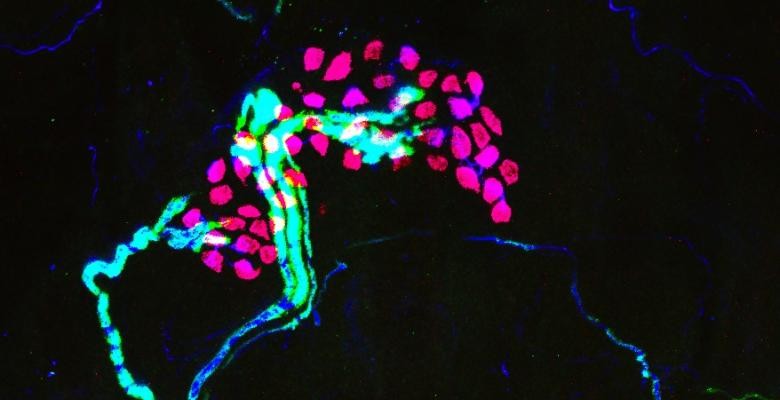Touch is the last frontier of sensory neuroscience. Until now, almost nothing has been known about the cells and molecules responsible for initiating our sense of touch.
In a study published in the April 6 online edition of the journal Nature, a team of Columbia University Medical Center researchers led by Ellen Lumpkin, associate professor of somatosensory biology, solves the mystery of how cells just beneath the skin surface enable us to feel fine details and textures.
The study is the first to utilize a new method that uses light as a signaling system to turn neurons on and off on demand, on skin cells called Merkel cells, to determine how they function and communicate.
“These experiments are the first direct proof that Merkel cells can encode touch into neural signals that transmit information to the brain about the objects in the world around us,” said Lumpkin.
In the future these findings could inform the design of “smart” prosthetics that restore touch sensation to amputees, as well as introduce new targets for treating skin diseases such as chronic itch.
The study was published along with a second one by the same team done with the Scripps Research Institute. The companion research identifies a touch-activated molecule in skin cells whose discovery has the potential to significantly advance the field of touch perception.
“It’s an exciting time in our field because there are still big questions to answer, and the tools of modern neuroscience give us a way to tackle them,” Lumpkin said.

